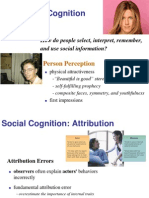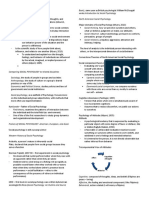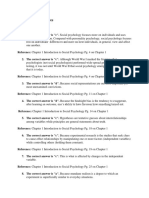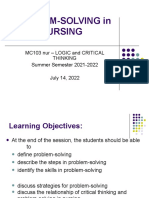0% found this document useful (0 votes)
99 views41 pagesChapter 14 Social Psychology
Social psychology focuses on how individuals develop attitudes and influence each other within social groups. Some key topics covered include social cognition, attribution theory, stereotypes, prejudice, discrimination, conformity, persuasion, aggression, and prosocial behavior. Research studies discussed include the fundamental attribution error, mere exposure effect, self-fulfilling prophecy, bystander effect, and how forming groups against a common goal can help reduce hostility between them.
Uploaded by
Arshia HematpoorCopyright
© © All Rights Reserved
We take content rights seriously. If you suspect this is your content, claim it here.
Available Formats
Download as PPSX, PDF, TXT or read online on Scribd
0% found this document useful (0 votes)
99 views41 pagesChapter 14 Social Psychology
Social psychology focuses on how individuals develop attitudes and influence each other within social groups. Some key topics covered include social cognition, attribution theory, stereotypes, prejudice, discrimination, conformity, persuasion, aggression, and prosocial behavior. Research studies discussed include the fundamental attribution error, mere exposure effect, self-fulfilling prophecy, bystander effect, and how forming groups against a common goal can help reduce hostility between them.
Uploaded by
Arshia HematpoorCopyright
© © All Rights Reserved
We take content rights seriously. If you suspect this is your content, claim it here.
Available Formats
Download as PPSX, PDF, TXT or read online on Scribd
/ 41










































































































